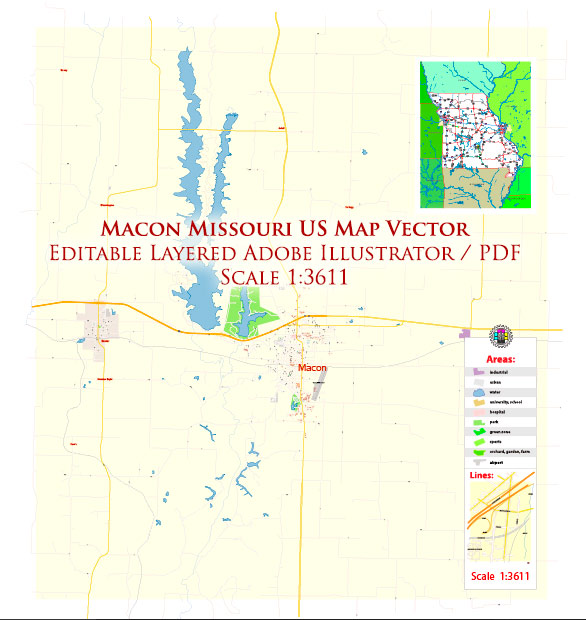Macon, Missouri, has a rich history of urban development that reflects the broader patterns of settlement and growth in the United States. While I don’t have specific details about Macon’s urban development beyond my last knowledge update in January 2022, I can provide a general overview based on historical trends.
- Early Settlement (19th Century): Like many towns in the Midwest, Macon’s history likely dates back to the 19th century when pioneers and settlers moved westward. The establishment of Macon would have been influenced by factors such as proximity to water sources, fertile land, and transportation routes.
- Railroad Development: The 19th century was marked by the expansion of the railroad network, and Macon, like many other towns, likely experienced significant growth due to its connection to the railroads. Railroads were crucial for transportation of goods and people, facilitating economic development.
- Economic Base: Macon’s early economy was likely based on agriculture, reflecting the region’s reliance on farming. The development of industries such as milling, manufacturing, and services would have contributed to the town’s economic diversification.
- Architectural Heritage: The architecture of Macon likely reflects the time periods during which different parts of the town were developed. You might find a mix of architectural styles, ranging from Victorian-era buildings to more modern structures.
- Population Growth and Institutions: As with many American towns, Macon’s population would have grown over the years. The establishment of schools, churches, and other community institutions is often a key aspect of urban development.
- 20th Century Changes: The 20th century brought about further changes with the rise of the automobile and improvements in infrastructure. These developments would have influenced the layout of the town, making it more accessible and connected.
- Urban Renewal and Revitalization: Like many American towns, Macon may have experienced urban renewal efforts in the mid-20th century. These initiatives aimed to address issues such as deteriorating infrastructure and changes in economic activity. Some areas might have undergone revitalization to adapt to new urban planning concepts.
- Contemporary Development: In more recent years, Macon may have experienced continued growth and development, possibly with a focus on preserving historical elements while adapting to the needs of a modern population.
It’s important to note that specific details about Macon’s urban development would require consulting local historical records, archives, or the city’s historical society for a more comprehensive and accurate account.


 Author: Kirill Shrayber, Ph.D.
Author: Kirill Shrayber, Ph.D.